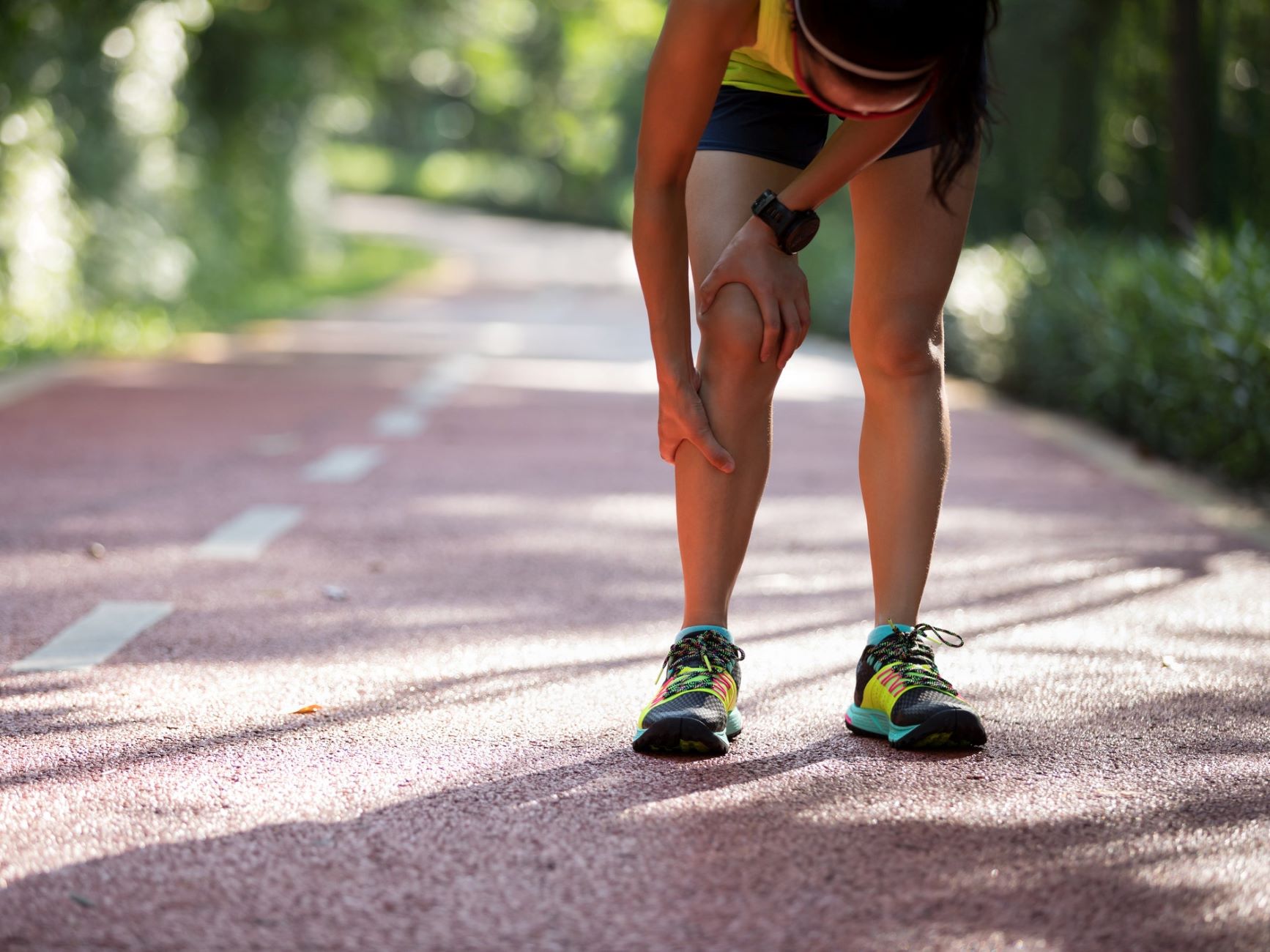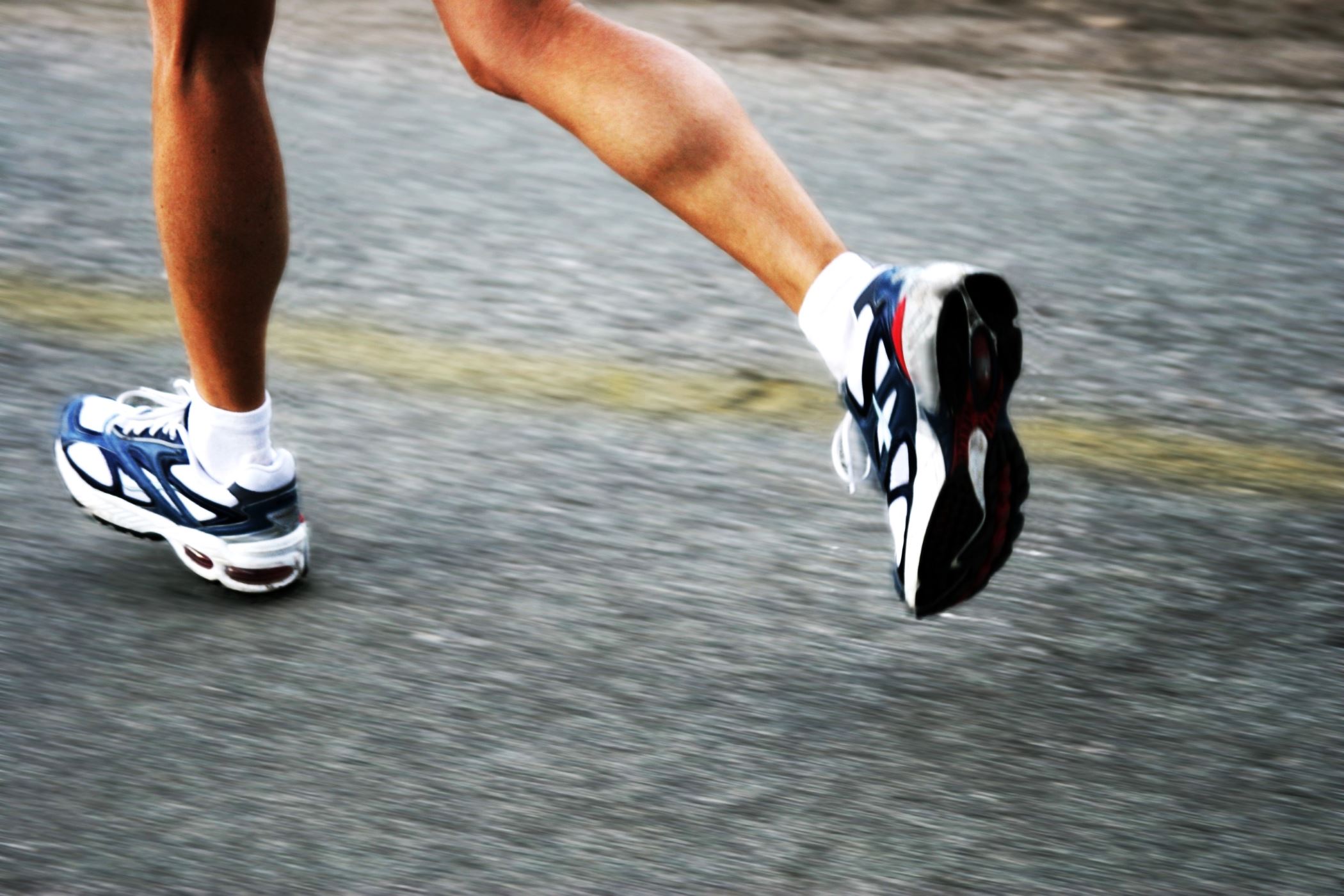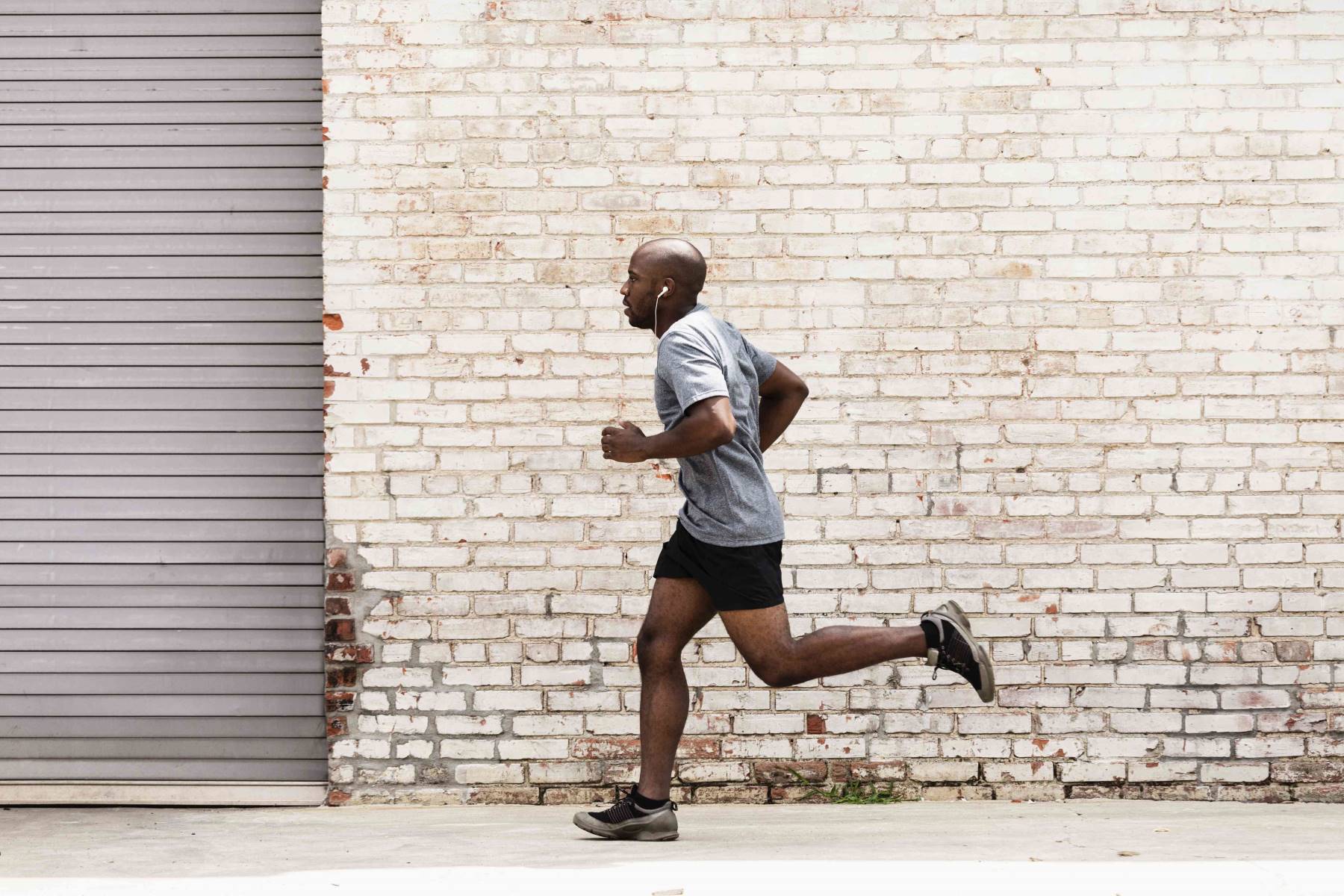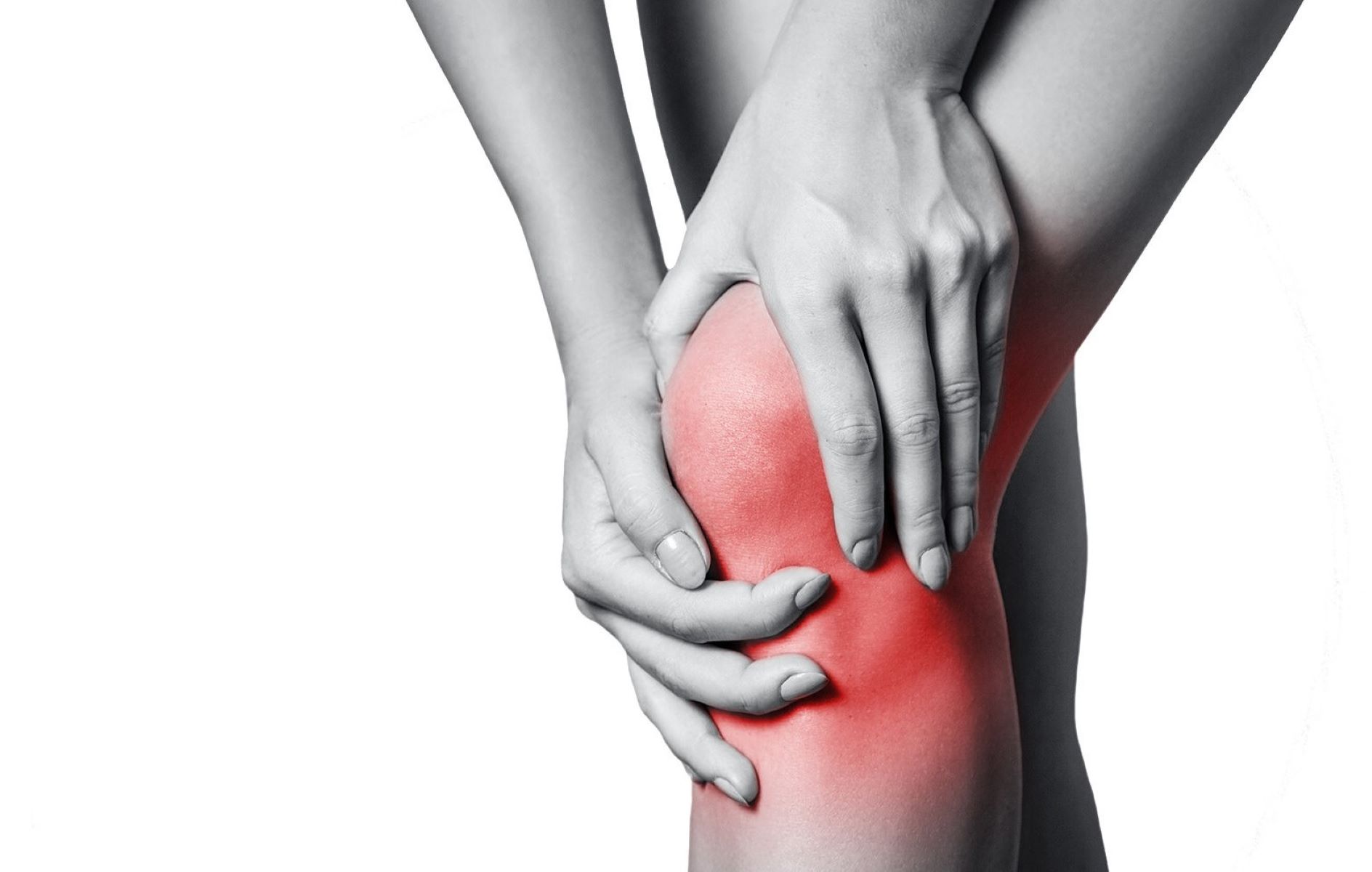Home>Health & Nutrition>Injury Prevention>Understanding Overuse Injuries In Running
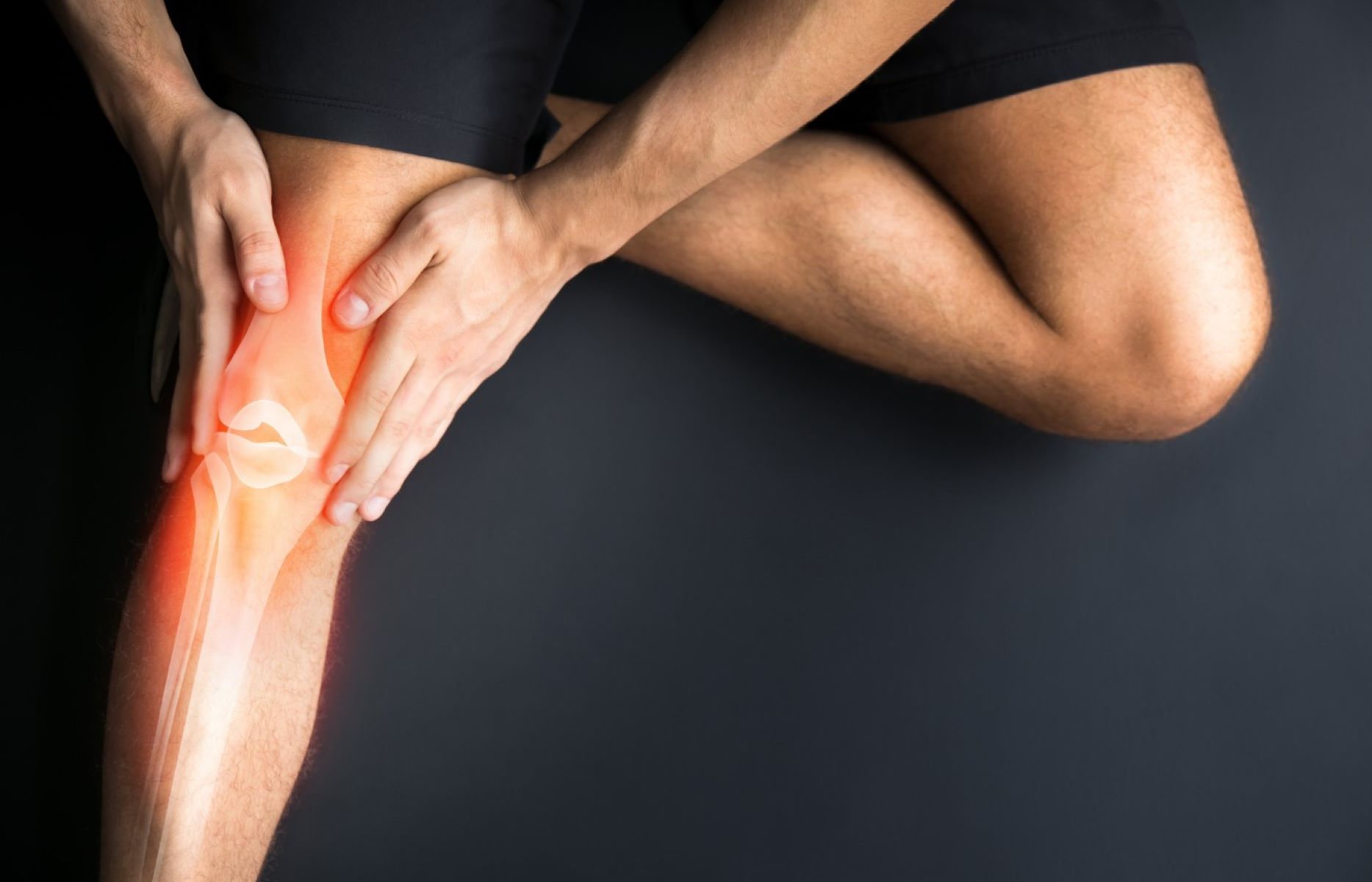

Injury Prevention
Understanding Overuse Injuries In Running
Published: February 24, 2024
Learn how to prevent overuse injuries in running with effective strategies and tips for injury prevention. Understand the importance of injury prevention to enhance your running performance.
(Many of the links in this article redirect to a specific reviewed product. Your purchase of these products through affiliate links helps to generate commission for Therunningadvisor.com, at no extra cost. Learn more)
Table of Contents
The Impact of Overuse Injuries on Runners
Overuse injuries can significantly impact runners, affecting their performance, overall well-being, and long-term participation in the sport. These injuries result from repetitive stress on the muscles, tendons, and bones, often stemming from training errors, improper equipment, or biomechanical issues. Understanding the profound impact of overuse injuries on runners is crucial for fostering injury prevention and promoting a sustainable running experience.
Read more: Running: Understanding Adductor Injuries
Physical and Emotional Toll
Overuse injuries can impose a substantial physical toll on runners, leading to discomfort, pain, and restricted mobility. The persistent nature of these injuries can hinder training consistency and impede progress, ultimately affecting performance and race readiness. Moreover, the frustration and disappointment stemming from sidelined training and missed races can take a toll on a runner's emotional well-being, potentially leading to feelings of discouragement and disillusionment.
Disruption of Training Regimen
Runners often adhere to structured training regimens to build endurance, speed, and resilience. Overuse injuries disrupt these regimens, forcing runners to scale back or halt their training altogether. This interruption can impede progress and hinder the attainment of personal goals, such as completing a marathon or achieving a new personal best. Additionally, the need for rest and rehabilitation can lead to detraining effects, causing a decline in fitness levels and detracting from previous hard-earned gains.
Long-Term Participation
For many runners, the sport is not merely a hobby but a way of life. Overuse injuries can jeopardize long-term participation in running, potentially leading to chronic issues that persist even after recovery. The fear of recurring injuries may instill apprehension and reluctance to resume training at previous intensities, impacting a runner's confidence and enjoyment of the sport. Consequently, the risk of abandoning running altogether looms large, depriving individuals of the physical, mental, and social benefits associated with the activity.
Financial Implications
The impact of overuse injuries extends beyond the physical and emotional realms, encompassing financial implications as well. Medical expenses, physical therapy costs, and potential loss of income due to decreased productivity can place a strain on a runner's financial resources. Moreover, the investment in race registrations, running gear, and coaching services may yield diminished returns if overuse injuries impede participation and performance.
Understanding the multifaceted impact of overuse injuries on runners underscores the importance of proactive injury prevention strategies and prudent training practices. By mitigating the risk of overuse injuries, runners can safeguard their physical well-being, sustain their passion for the sport, and pursue their running endeavors with confidence and resilience.
Common Types of Overuse Injuries in Running
1. Shin Splints
Shin splints, medically known as medial tibial stress syndrome, are a prevalent overuse injury among runners. This condition manifests as pain along the inner edge of the shinbone, resulting from repetitive stress on the shin's connective tissues and muscles. Runners, especially those who increase their training intensity or mileage too rapidly, are susceptible to shin splints. Inadequate footwear, running on hard surfaces, and biomechanical irregularities can exacerbate this condition.
2. Runner's Knee
Runner's knee, or patellofemoral pain syndrome, is characterized by pain around or behind the kneecap. This overuse injury arises from the repetitive motion of running, leading to irritation and inflammation of the kneecap's underside. Factors such as overpronation, muscle imbalances, and improper running form can contribute to the development of runner's knee. Runners may experience discomfort during or after running, particularly when navigating downhill terrain or stairs.
3. Achilles Tendinitis
Achilles tendinitis involves inflammation of the Achilles tendon, the large tendon connecting the calf muscles to the heel bone. This overuse injury commonly afflicts runners who abruptly increase their training intensity, engage in excessive hill running, or neglect proper warm-up and stretching routines. The condition presents as pain and stiffness in the Achilles tendon, often worsening during running or upon waking in the morning.
4. Plantar Fasciitis
Plantar fasciitis is characterized by pain and inflammation in the plantar fascia, a band of tissue connecting the heel bone to the toes. Runners with this overuse injury often experience sharp, stabbing pain in the heel, particularly during the initial steps after periods of rest. Factors such as tight calf muscles, inadequate footwear support, and sudden changes in running surfaces can contribute to the development of plantar fasciitis.
5. Stress Fractures
Stress fractures are small cracks in the bone, commonly occurring in the weight-bearing bones of the lower extremities, such as the shins, feet, and hips. Runners, particularly those who escalate their training intensity too rapidly or have low bone density, are susceptible to stress fractures. The persistent impact of running can overwhelm the bone's capacity for repair, leading to the development of these microfractures.
6. IT Band Syndrome
Iliotibial (IT) band syndrome involves inflammation and irritation of the IT band, a thick band of connective tissue running along the outer thigh. Runners with this overuse injury often experience sharp pain on the outer knee or hip during running, particularly when the foot strikes the ground. Factors such as running on uneven surfaces, inadequate warm-up, and muscle imbalances can contribute to the development of IT band syndrome.
Understanding the common types of overuse injuries in running is pivotal for runners to recognize early warning signs, implement preventive measures, and seek timely intervention when necessary. By fostering awareness of these injuries, runners can proactively safeguard their well-being and sustain their passion for the sport.
Risk Factors for Developing Overuse Injuries
Several factors contribute to the development of overuse injuries in running, encompassing biomechanical, training-related, and environmental elements. Understanding these risk factors is essential for runners to proactively mitigate the likelihood of sustaining such injuries and foster a sustainable running experience.
1. Training Errors
Inadequate progression in training intensity, duration, or frequency can significantly elevate the risk of overuse injuries. Rapidly increasing mileage or incorporating high-intensity workouts without allowing for sufficient recovery can strain the musculoskeletal system, predisposing runners to injuries such as stress fractures, shin splints, and tendonitis.
2. Biomechanical Irregularities
Runners with biomechanical irregularities, such as overpronation, underpronation, or leg length discrepancies, are more susceptible to overuse injuries. These irregularities can lead to inefficient distribution of forces during running, placing excessive stress on certain muscles and joints. As a result, conditions like runner's knee, IT band syndrome, and plantar fasciitis may manifest due to biomechanical imbalances.
3. Footwear and Running Surface
Inappropriate footwear and running surfaces can contribute to the development of overuse injuries. Worn-out or ill-fitting shoes fail to provide adequate support and shock absorption, increasing the strain on the feet and lower limbs. Similarly, running on hard or uneven surfaces can intensify impact forces, potentially leading to conditions such as shin splints and stress fractures.
4. Muscle Weakness and Imbalances
Muscle weakness and imbalances, particularly in the lower body and core musculature, can predispose runners to overuse injuries. Inadequate strength in the hip abductors, glutes, and calf muscles can disrupt proper biomechanics during running, leading to compensatory movements and increased stress on vulnerable structures. Addressing these imbalances through targeted strength training and conditioning can mitigate the risk of injury.
5. Inadequate Warm-Up and Recovery
Neglecting proper warm-up routines and post-run recovery practices can heighten the risk of overuse injuries. Inadequate warm-up fails to prepare the muscles and connective tissues for the demands of running, while insufficient recovery deprives the body of essential rest and repair. This can contribute to the development of conditions such as Achilles tendinitis, muscle strains, and fatigue-related injuries.
6. Sudden Changes in Training Regimen
Abrupt alterations in training regimen, such as drastic increases or abrupt decreases in mileage or intensity, can strain the body and elevate the risk of overuse injuries. Sudden changes disrupt the body's adaptation process, potentially leading to tissue overload and breakdown. Gradual and progressive adjustments in training parameters are essential for minimizing the risk of injury.
By recognizing these risk factors and implementing proactive measures, runners can mitigate the likelihood of overuse injuries, fostering a resilient and enduring running journey. Addressing training errors, biomechanical irregularities, and other contributing factors empowers runners to prioritize injury prevention and sustain their passion for the sport.
Recognizing the Signs and Symptoms of Overuse Injuries
Recognizing the signs and symptoms of overuse injuries is paramount for runners to address potential issues promptly and prevent the escalation of minor discomfort into debilitating conditions. By staying attuned to subtle changes in the body and acknowledging the early warning signals, runners can take proactive measures to mitigate the impact of overuse injuries.
1. Persistent Pain or Discomfort
One of the primary indicators of an overuse injury is the persistence of pain or discomfort during or after running. This discomfort may manifest as a dull ache, sharp pain, or throbbing sensation in specific areas such as the shins, knees, heels, or hips. Runners should be attentive to any pain that lingers beyond the typical post-exercise soreness, as it may signify an underlying overuse injury.
2. Localized Tenderness and Swelling
Localized tenderness and swelling in the affected area are common manifestations of overuse injuries. Runners may notice heightened sensitivity to touch or palpable swelling around the muscles, tendons, or joints involved in the repetitive stress of running. These physical manifestations often accompany discomfort and can serve as early indicators of potential overuse injuries.
3. Altered Movement Patterns
Overuse injuries can prompt alterations in movement patterns and running mechanics. Runners may experience changes in their gait, such as limping, favoring one leg, or adopting compensatory movements to alleviate discomfort. These alterations in movement patterns may indicate the body's attempt to mitigate pain and protect the affected area, signaling the presence of an overuse injury.
4. Reduced Performance and Endurance
A decline in running performance and endurance without apparent reasons can signify an underlying overuse injury. Runners may notice a struggle to maintain previous paces, increased fatigue during runs, or a diminished capacity to sustain training intensity. These performance decrements can stem from the physical limitations imposed by overuse injuries, highlighting the need for further evaluation.
5. Stiffness and Limited Range of Motion
Overuse injuries often manifest as stiffness and limited range of motion in the affected joints and muscles. Runners may experience difficulty in achieving full flexibility or notice a reduction in joint mobility during running and daily activities. These limitations in range of motion can impede optimal running mechanics and predispose individuals to further injury if unaddressed.
6. Persistent Discomfort at Rest
Overuse injuries can extend beyond running, causing persistent discomfort during rest or daily activities. Runners may notice lingering pain or discomfort in the affected area, even in the absence of physical exertion. This persistent discomfort can disrupt sleep, hinder daily mobility, and serve as a clear indication of an underlying overuse injury.
By recognizing these signs and symptoms of overuse injuries, runners can proactively seek appropriate interventions, such as modifying training regimens, seeking professional evaluation, and implementing targeted rehabilitation strategies. Heightened awareness of these indicators empowers runners to prioritize injury prevention and sustain a resilient and enduring running journey.
Preventing Overuse Injuries in Running
Preventing overuse injuries in running is paramount for sustaining a healthy and enduring running journey. By implementing proactive measures and fostering mindful training practices, runners can mitigate the risk of overuse injuries and cultivate a resilient foundation for their running endeavors.
Gradual Progression and Periodization
Gradual progression and periodization of training regimens are pivotal for injury prevention. By incrementally increasing mileage, intensity, and duration, runners allow their bodies to adapt and strengthen gradually, reducing the likelihood of overuse injuries. Periodization, which involves alternating periods of high and low intensity, provides essential recovery and adaptation phases, promoting overall resilience and injury prevention.
Proper Footwear and Running Surfaces
Investing in appropriate footwear and selecting suitable running surfaces play a crucial role in preventing overuse injuries. Well-fitted running shoes with adequate cushioning and support help absorb impact forces and minimize stress on the lower limbs. Additionally, opting for softer, more forgiving running surfaces, such as trails or tracks, can alleviate the strain on muscles and joints, reducing the risk of overuse injuries associated with hard or uneven terrain.
Read more: Understanding And Managing Patellofemoral Pain Syndrome: A Comprehensive Guide For Runners
Strength Training and Cross-Training
Incorporating strength training and cross-training into the overall training regimen is instrumental for injury prevention. Targeted strength exercises focusing on the lower body, core stability, and muscular balance can fortify the body against overuse injuries. Cross-training activities, such as swimming, cycling, or yoga, offer valuable opportunities for recovery, diversifying movement patterns, and reducing the repetitive stress inherent in running.
Adequate Warm-Up and Recovery
Prioritizing comprehensive warm-up routines and post-run recovery practices is essential for injury prevention. Dynamic warm-up exercises prepare the muscles, tendons, and ligaments for the demands of running, reducing the risk of strain and injury. Similarly, incorporating adequate recovery strategies, including stretching, foam rolling, and rest days, facilitates tissue repair and adaptation, mitigating the accumulation of overuse-related stress.
Biomechanical Assessment and Correction
Undergoing a biomechanical assessment and addressing any identified irregularities can significantly contribute to injury prevention. Identifying issues such as overpronation, leg length discrepancies, or gait abnormalities enables runners to implement corrective measures, such as orthotic inserts or gait retraining, to mitigate the impact of biomechanical irregularities and reduce the risk of overuse injuries.
Listening to the Body
Developing a heightened awareness of the body's signals and responding to early warning signs is fundamental in injury prevention. Recognizing subtle discomfort, alterations in movement patterns, or persistent fatigue allows runners to adjust training loads, seek professional evaluation, and implement necessary modifications to prevent the escalation of minor issues into debilitating overuse injuries.
By embracing these preventive strategies and integrating them into their running routines, individuals can foster a sustainable and injury-resilient approach to running, safeguarding their well-being and perpetuating their passion for the sport.
Read more: Maintaining Running Fitness During Injury
Treatment and Recovery for Overuse Injuries
Treatment and recovery for overuse injuries are essential components of the healing process, enabling runners to regain strength, mobility, and confidence in their running pursuits. Addressing overuse injuries promptly and comprehensively is pivotal for facilitating a successful recovery and preventing the recurrence of such injuries.
Rest and Activity Modification
Upon the onset of an overuse injury, immediate rest and modification of physical activities are paramount. This entails refraining from activities that exacerbate the injury, such as running, and allowing the affected tissues to undergo initial healing. Implementing a temporary reduction in training intensity and duration is crucial for preventing further aggravation of the injury and promoting the initial stages of recovery.
Professional Evaluation and Diagnosis
Seeking professional evaluation from a qualified healthcare provider, such as a sports medicine physician or physical therapist, is instrumental in obtaining an accurate diagnosis and tailored treatment plan. Through comprehensive assessment, including physical examinations, imaging studies, and biomechanical evaluations, healthcare professionals can pinpoint the specific nature and severity of the overuse injury, guiding the formulation of an effective treatment strategy.
Rehabilitation and Physical Therapy
Engaging in structured rehabilitation programs and physical therapy interventions is fundamental for restoring function, mobility, and strength following an overuse injury. These programs often encompass targeted exercises, manual therapy, and modalities aimed at alleviating pain, improving flexibility, and enhancing muscular endurance. Additionally, rehabilitation focuses on correcting biomechanical imbalances and movement patterns to mitigate the risk of future injuries.
Read more: Understanding The Concept Of A Tempo Run
Gradual Return to Running
As the injury progresses through the initial phases of healing and rehabilitation, a gradual return to running can be initiated under the guidance of healthcare professionals. This phased approach involves a systematic reintroduction of running activities, starting with low-impact and low-intensity sessions, and progressively increasing the duration and intensity based on the body's response. Adhering to a structured return-to-running protocol minimizes the risk of re-injury and fosters a sustainable reintegration into regular training.
Nutritional Support and Hydration
Optimizing nutritional intake and hydration status is integral to the recovery process for overuse injuries. Adequate protein intake supports tissue repair and regeneration, while essential nutrients and hydration contribute to overall healing and recovery. Additionally, maintaining a balanced diet rich in anti-inflammatory foods can aid in reducing inflammation and promoting the body's natural healing mechanisms.
Psychological Support and Coping Strategies
Acknowledging the psychological impact of overuse injuries and implementing coping strategies is vital for holistic recovery. The frustration, anxiety, and emotional distress stemming from sidelined training and compromised performance can significantly impact a runner's well-being. Seeking support from peers, coaches, or mental health professionals can provide valuable coping mechanisms and foster a positive mindset throughout the recovery journey.
By embracing a comprehensive approach to treatment and recovery, runners can navigate the challenges posed by overuse injuries, reclaim their physical resilience, and reignite their passion for running with renewed vigor and determination. Prioritizing these recovery strategies empowers individuals to emerge from overuse injuries stronger, more resilient, and better equipped to pursue their running aspirations.

